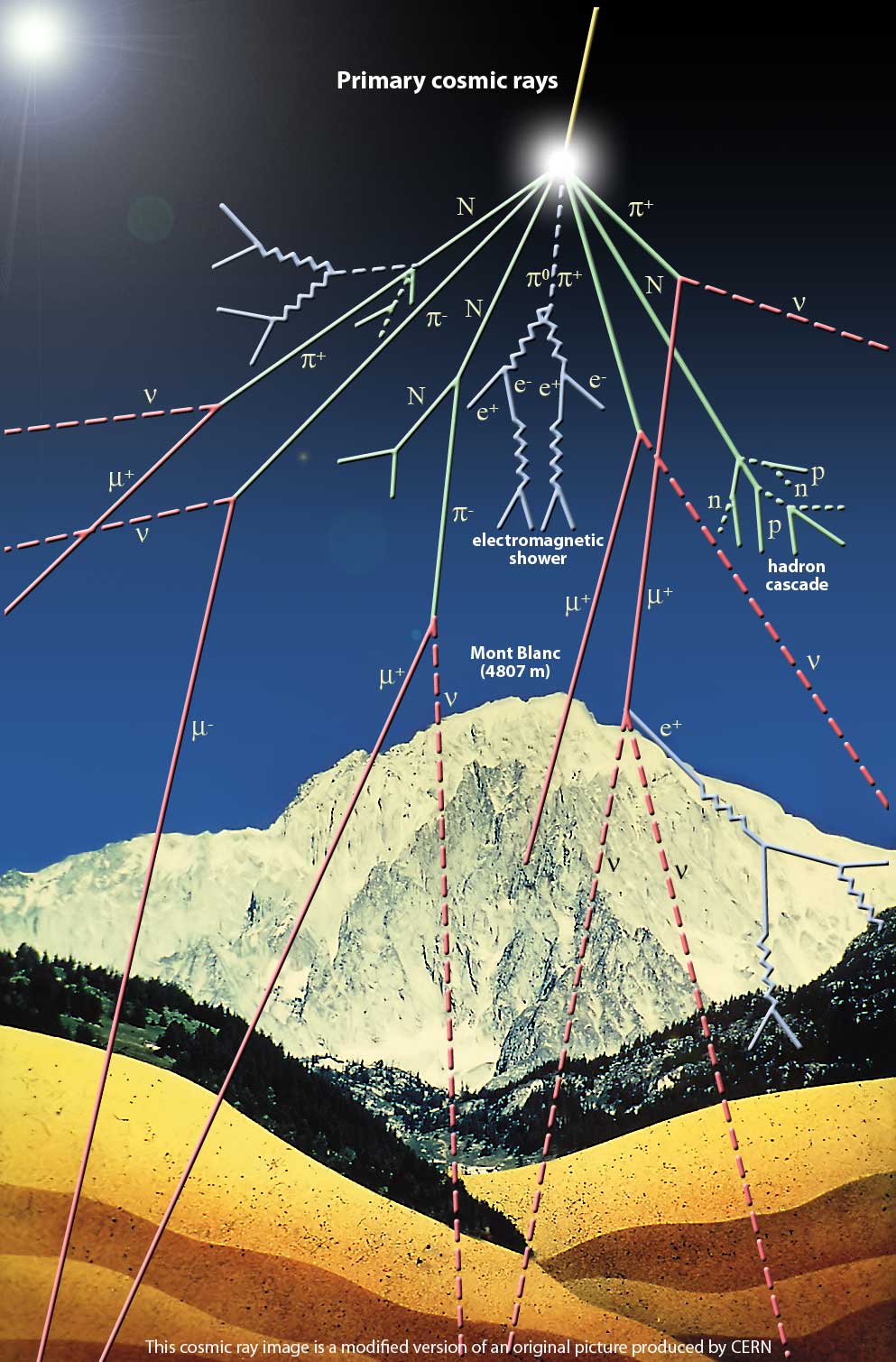Cosmics for High School Teachers
The following is intended for an audience of High school teachers and their students.
What is a Cosmic Ray
Cosmic rays are particles originating outside the earth which hit the Earth's atmosphere. Cosmic rays are made up of all the elements in the periodic table. 89% of the particles are protons, 10% are alpha particles (a helium atom without its electrons), and 1% are heavier elements.
Galactic and Solar
The term cosmic rays usually refers to Galactic cosmic rays that are further divided into two categories; either galactic or extragalactic. Galactic cosmic rays are all particles which enter our solar system from outside. Extragalactic cosmic rays flow into our galaxy having energies beyond 10e15 eV (amount of energy your body creates in 1/1000 of a second). They are very rare with only 1 entering a square meter on the earth's surface per year.
Solar cosmic rays originate from the sun and have energies between 10 to 100 kilo-electron volts (keV = 1.6 e-16 Joules = amount of heat your body produces in 1e-18 seconds [1/1000 femto-seconds]).
Primary and Secondary cosmic rays
Primary cosmic rays are galactic cosmic rays which can interact with stellar matter and the Earth's atmosphere. The interaction of the primary cosmic rays with the Earth's atmosphere produce secondary cosmic rays. The secondary particles produced are pions, muons, gamma rays, neutrinos, and neutrons.

At sea level, cosmic rays are mostly composed of MeV energy electrons and 100 MeV energy muons. The proton flux is more than 10,000 times smaller than the electron flux.
Oh-My-God- Cosmic rays
About 15 protons having an energy of 10e20 eV have been seen by the University of Utah's Fly's Eye Cosmic Ray Detector. ( the first publication Physical Review Letters, 22 November 1993, http://arxiv.org/abs/astro-ph/9410069)
Particles of this energy could light up a 40 Watt light bulb for a whole second.
At a January 12, 2005 conference of the American Astronomical Society, particle physicist Glennys Farrar presented a paper tracing five similar very-high-energy cosmic rays, all of which were detected between 1993 and 2003, to a pair of colliding galaxy clusters 450 million light-years from Earth. Farrar speculated that the clusters' powerful magnetic fields could become warped in the collision, accelerating charged particles to the extreme energies astronomers have observed. [edit]